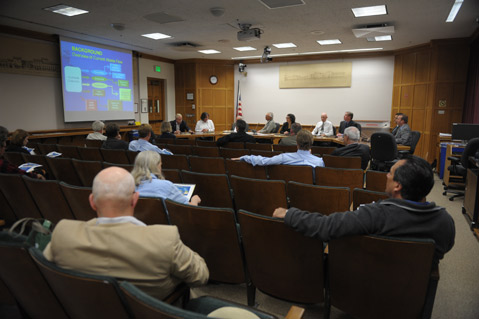Low-Tech or Mid-Tech for Tajiguas Landfill?
City Council Takes Hard Look at Trash-Hauling and Recycling Options

It wasn’t quite a case of cold feet or second thoughts, but members of the Santa Barbara City Council made clear they wanted to take a long hard look at all their trash-hauling and recycling options before signing on the dotted line for an expensive medium-tech plan to extend the operating life of the Tajiguas Landfill by another 10 years, relying upon an anaerobic digestion technology not used before in the United States. The new technology — which involves locking presorted garbage into 16 air-free vaults for three months and feeding the contents to bacterial microbes — will cost $33 million to install and will help divert up to 62 percent of trash.
But City Hall trash expert Matt Fore contended the same diversion rate — and same life extension — could be achieved for decidedly less money by the low-tech method of composting the city’s green waste, food scraps, and other biodegradable refuse. At Fore’s instigation, the council insisted that this low-tech alternative be included in the environmental analysis just now getting underway for the Tajiguas project. Driving the search for new trash-disposal technologies is the imminent loss of dumping space. The landfill is expected to run out of permitted area as of 2023.
In 2009, the city joined with the County of Santa Barbara, Goleta, and two other cities to find a solution that would expand the plant’s lifespan by converting a large percentage of new trash into electricity. The most promising technologies happen to be the most untested and politically controversial and were soon abandoned. Last year, the county’s solid waste task force settled upon anaerobic digestion as the medium-tech technology of choice. It also settled upon a San Luis Obispo consortium of businesspeople — Mustang Renewable Power Ventures — to lead the charge.
For the deal to work, Mustang needs a 20-year commitment of all the city’s trash. But Fore and some councilmembers have expressed concern that by signing so a long contract, they could miss out on new technologies as they ripen. Given the volume of trash the City of Santa Barbara generates, City Hall’s participation is key to the economic viability of any long-term plan for Tajiguas. In that context, the councilmembers’ insistence on exploring composting as an alternative could not have been encouraging to the County of Santa Barbara’s trash czar, Mark Schleich, and representatives from Mustang Renewable, who were in the room.



